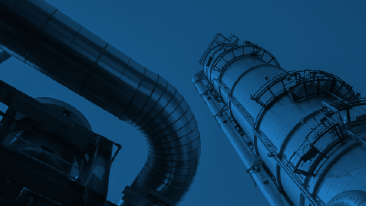Tailoring a fine suit can help a business person make a great first impression on a new client. Tailoring ever so gently makes the suit fit properly, removing the turn off ill-fitting clothes can create by suggesting a lack of attention to detail. Anyone who has bought a new suit off a rack in a store knows that a bit of adjustment in the shoulders, waist or pant length makes all the difference in the world.
Think of calibration like having a tailor make a suit to your measurements before you enter the store so that the suit fits fine with no need for alternations.
Calibrating an estimate for capital projects has the same effect – it improves how the estimate fits the actual equipment and material cost, without creating a line-by-line bottoms-up estimate. Calibration also removes the risk of costs that are out of line with the specific company, project or location.
Let’s look at the some of the benefits of calibrating estimates:
1) Calibration improves accuracy.
Calibration is the act of adjusting an estimate to account for anticipated bias. Observing the variance between the estimated value and the actual known value helps reduce or eliminate the error in future estimates. Cost estimating deals with forecasting costs related to a set of activities before they have been implemented. Improve quality, quantity, and consistency of estimates in all project phases. By aligning major sources of cost in a project, like piping, you remove the risks that this source of cost would be inaccurate and contribute in an unduly manner to an inaccurate estimate.
2) Calibration identifies estimate risk early in the creation process.
Performing gap analysis early in the estimate identifies specifications around civil, steel and equipment, instrumentation and piping designs that you can compare to regional cost standards built into Aspen Capital Cost Estimator or company prior estimates. By examining the cost variances of major classes within the estimate, you can identify and more thoroughly evaluate the costs that might cause you to make incorrect assumptions or decisions that might affect design or execution plans. Bad data can lead to bad decisions.
3) Calibration leads to better future estimates.
Calibration establishes costs that are specific to your company, project location, project or execution plan. Knowing your specific costs and reusing them in future estimates allows you to start from a position closer to your real business situation than regional standards that might or might not reflect your actual costs.
Looking dapper or producing a sharp estimate has the same effects: providing confidence to the customer. Sharper estimates that are delivered on time decrease capital costs of estimates and produce confidence in the capital project. As engineering and construction companies see more work after the measurable slump of 2016-2017, it is becoming even more important to streamline the bidding and estimating process with a digital solution, allowing E&Cs to take on more bids leading to more work for the company.
You can learn more about calibration and the benefits it brings in next week’s webinar, Learn from an Expert: Improve Estimate Accuracy and Consistency through Estimating Best Practices.





Leave A Comment